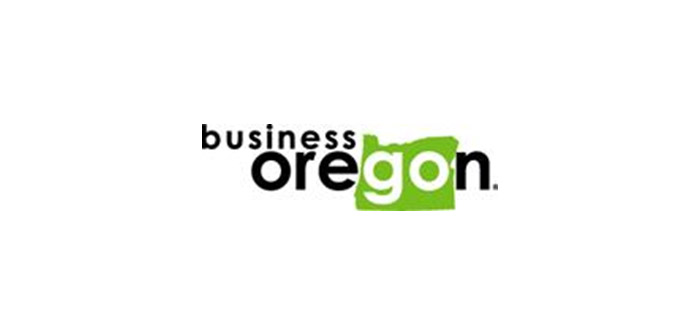Small businesses in Oregon and across the country have been hit incredibly hard by the coronavirus crisis. Sen. Merkley has fought hard to ensure that congressional action would provide significant support for small businesses during this unprecedented time. The third coronavirus relief package provides significant funding and new programs to support small businesses across the country. This includes:
- $349 billion in forgivable loans through the Paycheck Protection Program, with no personal guarantee or collateral required.
- $10 billion for SBA economic injury disaster loans (EIDL), which provide grants of up to $10,000 or loans of up to $2 million to qualifying small businesses.
- $17 billion for SBA to cover six months of payments for small businesses with existing SBA-backed businesses loans. This is six months of total relief from payments for existing and new applicants, though collateral is required. New applicants have six months from the signing of the legislation to apply through SBA’s Lender Match Portal, with six months of relief for both principal and interest.
- An Employee Retention Tax Credit
○ Employee retention tax credit of 50 percent of wages for each employee, capped at $10,000 in wages.
○ The tax credit is available to small businesses who do not participate in the Paycheck Protection Program, and businesses of all sizes who had to fully or partially suspend operations at the direction of the government due to the COVID19 outbreak or have gross receipts that are 50 percent less than the same quarter the previous year, until they reach 80 percent of their gross receipts.
○ This is a refundable payroll tax credit, and the IRS will provide employers with methods to request advance refunds to get the money back faster.
FAQs: The Paycheck Protection Program
Small businesses can receive fully forgivable loans through the newly-created Paycheck Protection Program to address important payroll and operational costs. The federal government has guaranteed these loans, so no personal guarantee or collateral will be required.
FAQs: Eligibility and Application Process
Who can apply?
- Small businesses, nonprofits (excluding local affiliates of some national organizations), veterans’ organizations, and tribal businesses with fewer than 500 employees are all eligible to apply.
○ Affiliation rules are waived for any business assigned a franchiser identifier code or a NAICS code beginning with 72 that has 500 or fewer employees per physical location, or any business that receives funding through a Small Business Investment Company (SBIC).
- Individuals who operate as sole proprietors, are self-employed or are independent contractors are also eligible.
○ Note: Individuals must submit documentation to demonstrate their eligibility, including payroll tax filings, Forms 1099–MISC, and income and expenses from the sole proprietorship.
- Undocumented business owners are not eligible for this relief, but legal permanent residents can apply.
Is my business eligible for the Paycheck Protection Program if I have already had to lay off employees?
- Companies that have already laid off employees can hire back the laid off employees and have that payroll expense covered under the Paycheck Protection Program.
How much can I receive?
- This forgivable loan is intended to cover eight weeks of payroll and operational costs, based on the sum of:
o The average total monthly payments for payroll costs from the prior year before the date the loan was made, multiplied by 2.5.
o For seasonal employers, the average total monthly payments for payroll for the 12- week period from February 15, 2019, or March 1, 2019, to June 30, 2019, multiplied by 2.5.
o For those small businesses that were not in business from February 15, 2019 to June 30, 2019, the average total monthly payments by the employer for payroll costs incurred during the period beginning on January 1, 2020 and ending on February 29, 2020, multiplied by 2.5.
o Plus any outstanding loans made beginning January 31, 2020.
How do I apply?
- You can apply through participating banks and credit unions. A list of Oregon SBA partner lenders can be found here. The federal government has provided a guarantee of these loans to qualified lenders, which includes most banks and established lending institutions that small business owners already work with (the federal government will also reimburse lenders for processing these loan applications).
○ Note: Because the federal government has guaranteed these loans, no personal guarantee or collateral will be required.
- Applicants will need to make a good faith certification to lenders that:
○ Uncertain economic conditions require a loan to support ongoing operations;
○ Funds will be used to retain workers, maintain payroll, make mortgage interest and lease payments and utility payments, and to service existing debt;
○ No other applications are pending for a loan for the same purpose, and the recipient has not received any loans for this purpose.
■ Note: Recipients of economic injury disaster loans between January 31, 2020 and February 15, 2020 may also be recipients of these loans to support payroll obligations.
FAQs: How Paycheck Protection Program Loans Are Forgiven
Recipients of Paycheck Protection Program loans can have their loans forgiven for costs incurred on eligible expenses in the eight weeks following the origination of their loan. Recipients must submit an application for forgiveness to the lender who originated the loan, with the appropriate documentation
How much can be forgiven?
- All loan proceeds spent on the eligible expenses (see below for a list of eligible expenses) can be 100 percent forgiven.
- The amount of forgiveness will be reduced pro-rata based on the number of full-time employees maintained during the outbreak of COVID-19, compared to the number of employees maintained between February 15, 2019 and June 30, 2019; or between January 1, 2020 and February 29, 2020, or for seasonal employers, the average number of full-time equivalent employees per month from February 15, 2019 and June 30, 2019.
- The amount of forgiveness will also be reduced by the amount of any salary reductions that are greater than 25 percemt of the total salary or wages of that employee, prior to the COVID-19 outbreak.
What are eligible expenses?
Eligible expenses to be forgiven include:
- Payroll costs.
○ Note: Employers with tipped employees may receive reimbursement for additional wages paid to those employees during the outbreak.
- Costs related to health care benefits and insurance premiums.
- Employee salaries, commissions or compensations.
- Interest payments on mortgages (funding shall not go towards the principal).
- Rent.
- Utilities.
- Interest on other outstanding debt obligations (incurred before the COVID outbreak, which began on February 15, 2020).
Are there any limitations on these eligible expenses?
- Eligible payroll costs are capped at salaries over $100,000 per employee.
- Paycheck Protection Program loan forgiveness cannot be used to cover paid time off or paid sick leave. Separate credits to cover these expenses have been provided in the Families First Coronavirus Response Act.
Can I use the Paycheck Protection Program to help refinance existing loans?
- A loan made between January 31, 2020 and February 15, 2020 may be refinanced as part of these covered loans.
FAQs – Paid Leave Through the Families First Act
Following the passage of the Families First Coronavirus Response Act, businesses with fewer than 500 employees are eligible to be reimbursed for paid sick leave and child caregiving leave that they provide to their employees in response to this crisis
How much paid time off can be covered, and what type of paid time off is eligible?
Under this program, employees are eligible for — and employers can be reimbursed for — paid time off up to:
- Two weeks (up to 80 hours) of paid sick leave at the employee’s regular rate of pay (up to $511 per day/$5,110 total) where the employee is unable to work because the employee is quarantined or experiencing COVID-19 symptoms and seeking a medical assistance; OR
- Two weeks (up to 80 hours) of paid sick leave at two-thirds the employee’s regular rate of pay (up to $200 per day/$2,000 total) because the employee is unable to work because they need to care for an individual subject to quarantine, or to care for a child whose school or child care provider is closed or unavailable because of COVID-19
What if two weeks of leave is not enough?
This program can also provide for up to an additional ten weeks of paid leave at two-thirds the employee’s regular rate of pay (up to $200 per day/$10,000 total) where an employee, who has been employed for at least 30 calendar days, is unable to work because they must care for a child whose school or child care provider is closed or unavailable for reasons related to COVID-19.
Who is eligible?
- Employees at companies with fewer than 500 employees.
- Local, state, and federal government employees.
- Union members employed under a multiemployer plan.
- Contractors are eligible.
- Nonprofits are eligible.
How will it work for eligible employers to be reimbursed for these costs?
- Employers initially front the cost of emergency paid sick leave, but will be fully reimbursed by the federal government within three months.
- The reimbursement will cover both the wages paid and the employer’s contribution to employee health insurance premiums during the period of leave.
- Employers will be reimbursed through a refundable tax credit that counts against employers’ payroll tax, which all employers pay regardless of nonprofit/for-profit status.
- Employers and self-employed individuals will submit emergency paid sick leave or child caregiving expenses as part of their estimated quarterly tax payments. If employer’s costs more than offset their tax liability, they will get a refund from the IRS.
- More information will be available from the IRS soon on how employers can start the application process for these credits.
FAQs – Small Business Administration Assistance
The Small Business Administration (SBA) is also making assistance available to small businesses to weather the coronavirus crisis.
What programs are available through SBA to support small businesses?
Small businesses and private nonprofits can apply for disaster grants of up to $10,000 and disaster loans of up to $2 million in states, including Oregon, where a coronavirus disaster has been recognized by the SBA.
How do SBA grants work?
Small businesses and private nonprofits can receive a grant of up to $10,000, within three days of applying, to support their operating costs.
- Note: Small businesses who receive this SBA assistance can still apply for Paycheck Protection, but can’t be forgiven for that $10,000 because that would be considered double dipping.
What are the terms of SBA disaster loans?
These loans, capped at $2 million, carry an interest rate of 3.75 percet for small businesses and 2.75 percent for nonprofits. The interest rate will not exceed 4 percent and the loan term is not to exceed 30 years.
How can I apply and what else do I need to know?
Further information and directions for applying online can be found on the SBA’s website at:
disasterloan.sba.gov/ela/Information/EIDLLoans.



